This guide explains organic search.
Below, you’ll find out what is organic search and see examples of organic search results that appear on search engines like Google, Yahoo, and Bing. You’ll also get an explanation of the difference between organic search and paid search traffic so you know how each method applies to your website for search engine optimization (SEO).
By the end of this page, you’ll understand the definition and core concepts of what organic search means for SEO and digital marketing.
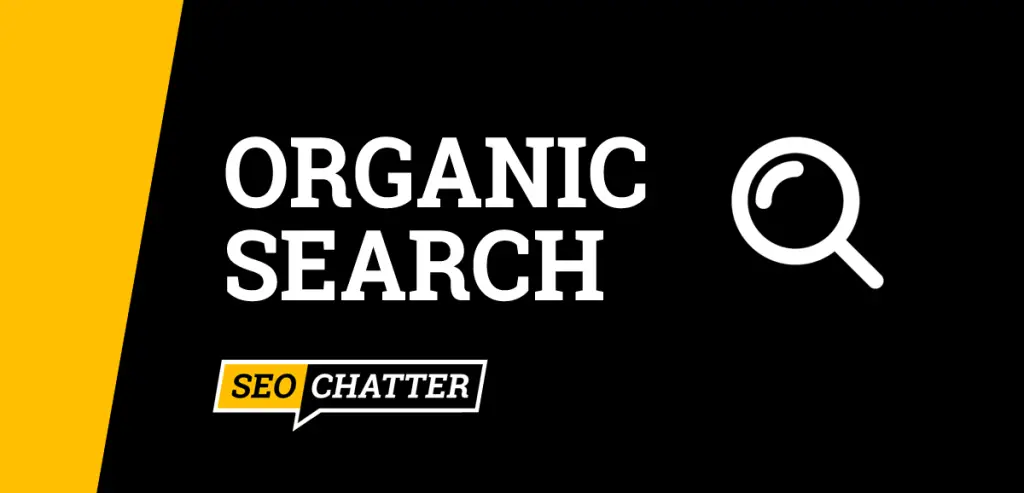
What Is Organic Search?
Organic search is the unpaid search results that are shown on the search engine results pages (SERPs). Organic search results exclude paid ads, meaning they’re the free listings in the search engines that appear because they’re relevant to a user’s search query.
Example Types of Organic Search Results
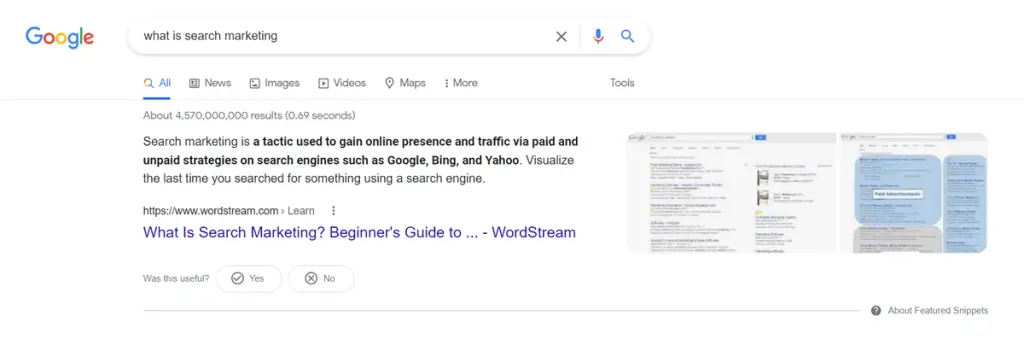
Featured Snippets
Featured snippets are organic search results that appear at the top of the SERPs for certain queries. This organic search feature is also known as “position 0” because it’s the top-ranking position for unpaid listings. A featured snippet comes in four types: paragraphs, tables, lists, and videos. The purpose of organic featured snippets is to provide users with a quick answer to their query direct in the SERPs. On average, featured snippets get 35% of all organic ranking user clicks.
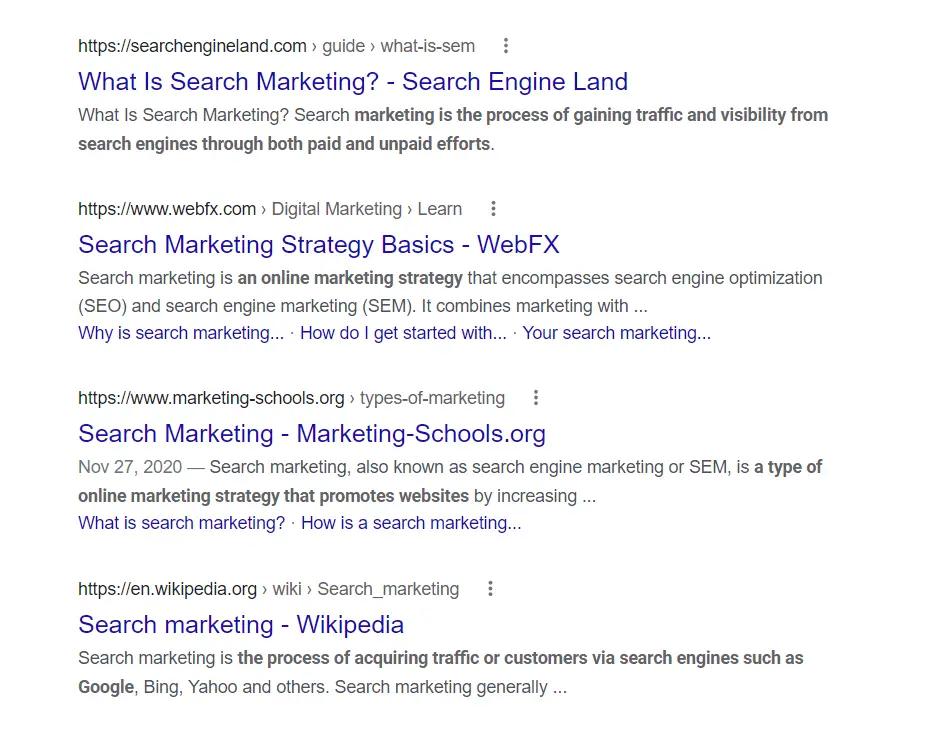
Organic Search Listings
Organic search listings are websites that do not have the word “Ad” next to them. These results are calculated algorithmically for organic keywords and are not affected by advertiser payments. Sites that rank in these positions have better organic SEO than the competitors. On average, these natural listings get a 44% click-through rate (CTR) of all user clicks.

Rich Results
Rich results (also known as “rich snippets”) are organic search listings with additional data displayed for the website result. The purpose is to highlight key information that is helpful for the user. Examples include review ratings, recipe information, pricing, number of votes, and author name.
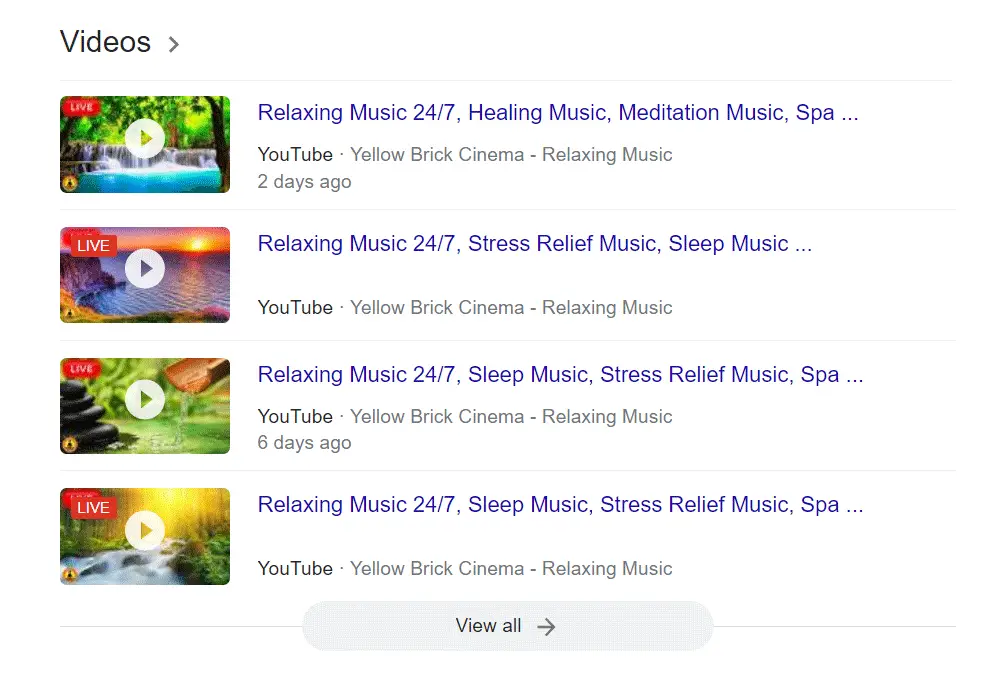
Video Carousels
Video carousels contain thumbnails of relevant videos for an organic search query. Users can scroll through these videos to find and play one that matches their search intent. It’s estimated that more than 86% of digital marketers use video as part of their organic search marketing strategy.
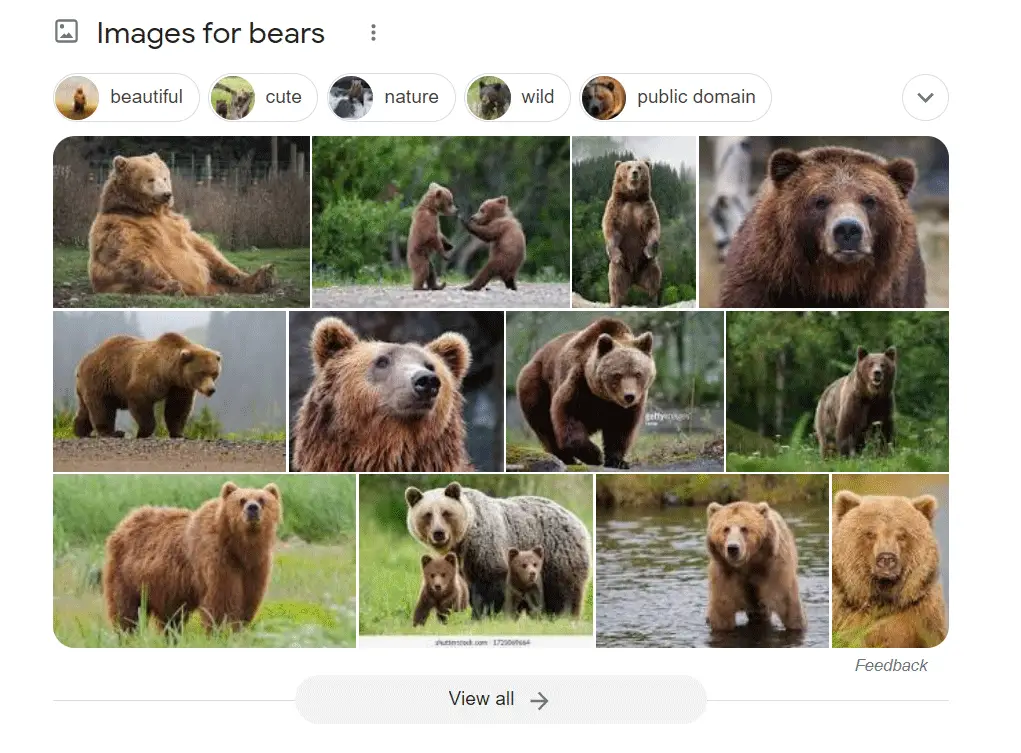
Image Carousels
Image carousels are another type of organic search feature that’s similar to video carousels. Users can look through example images that are relevant to the search query.

Top Stories
Top stories is a section that appears within Google Search when the algorithm detects an organic search query that is news-oriented. The system features articles that are new and current from reputable websites.
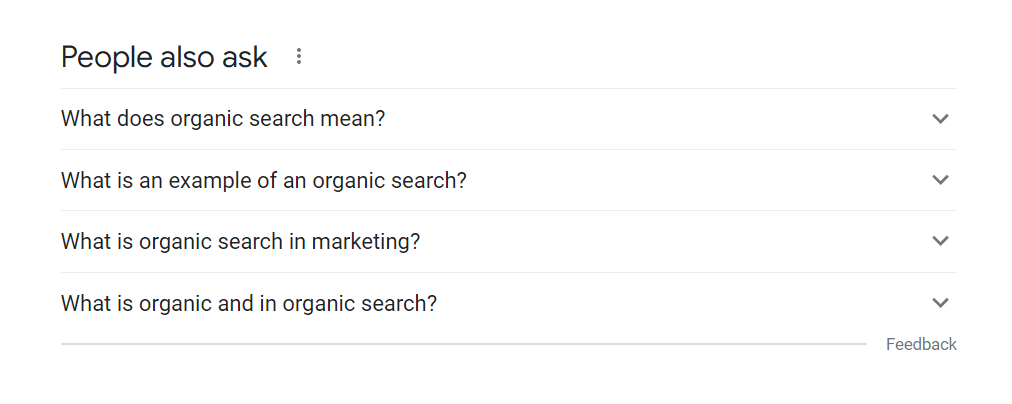
People Also Ask Results
People Also Ask is a Google Search feature that provides a list of questions that are related to the initial query. This box appears within the organic results and displays non-paid listings that answer those questions. The websites listed in the People Also Ask results typically match the same sites that are highlighted in featured snippets for the same query. On average, these results get 6% of all user clicks. And for some sites, it’s a good source for more organic traffic.
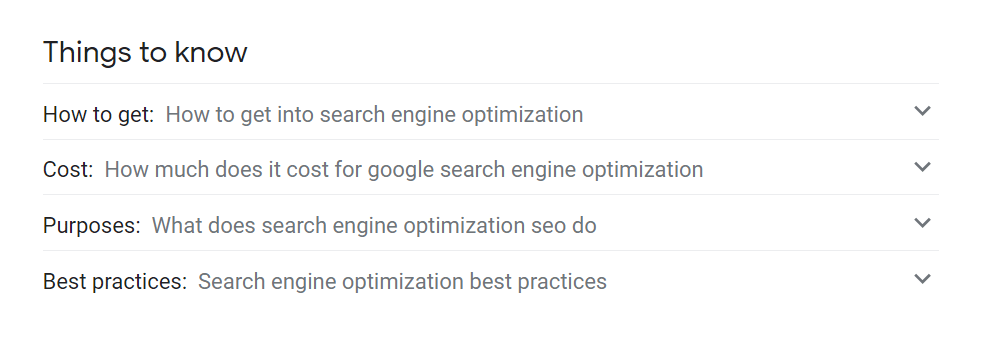
Things to Know
Things to Know is another organic search feature that provides users with important information in the SERPs. The purpose is to help searchers build their understanding of the topic from the ground up by listing essential things to know about the topic as a whole. Websites with links are displayed in this section organically similar to the People Also Ask box.
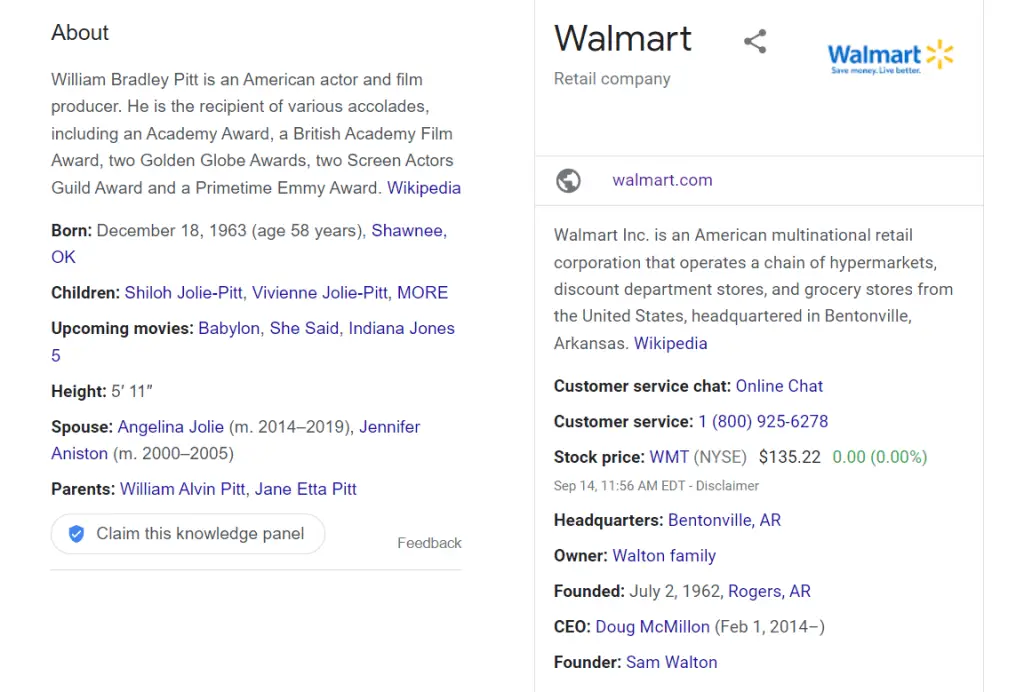
Knowledge Panels
Knowledge panels are information boxes that appear on search engines like Google, Yahoo, and Bing when you search for known entities (i.e., people, places, organizations, and things) that have verified information in the Knowledge Graph, which is a collection of interlinked descriptions of concepts, relationships, and events.
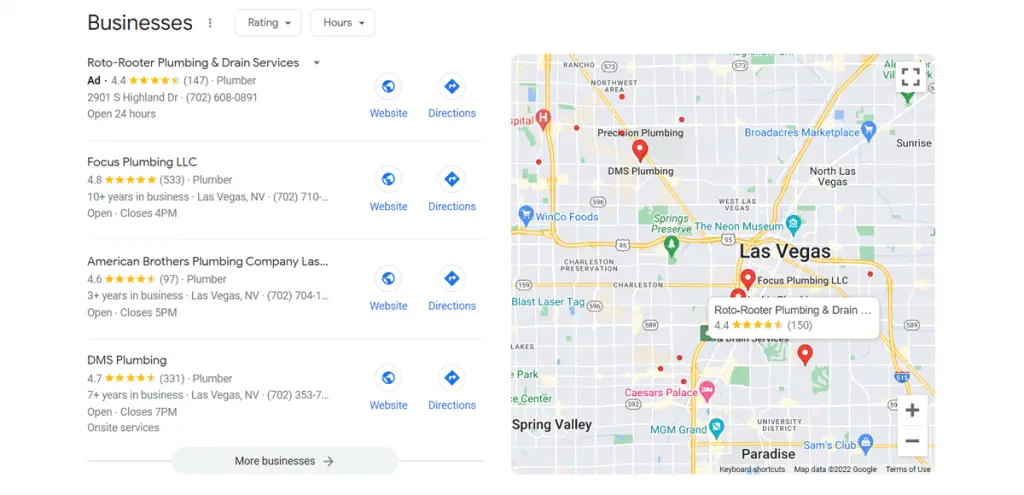
Local Packs
The local pack is an organic search type that appears in the SERPs for local search queries. Local packs feature three unpaid business listings and an optional paid listing that are relevant to a particular search as well as a map with the business locations. You can see more business listings by clicking on the “More Business” button. Ranking in the local pack requires a good local SEO strategy since these are unpaid listings.
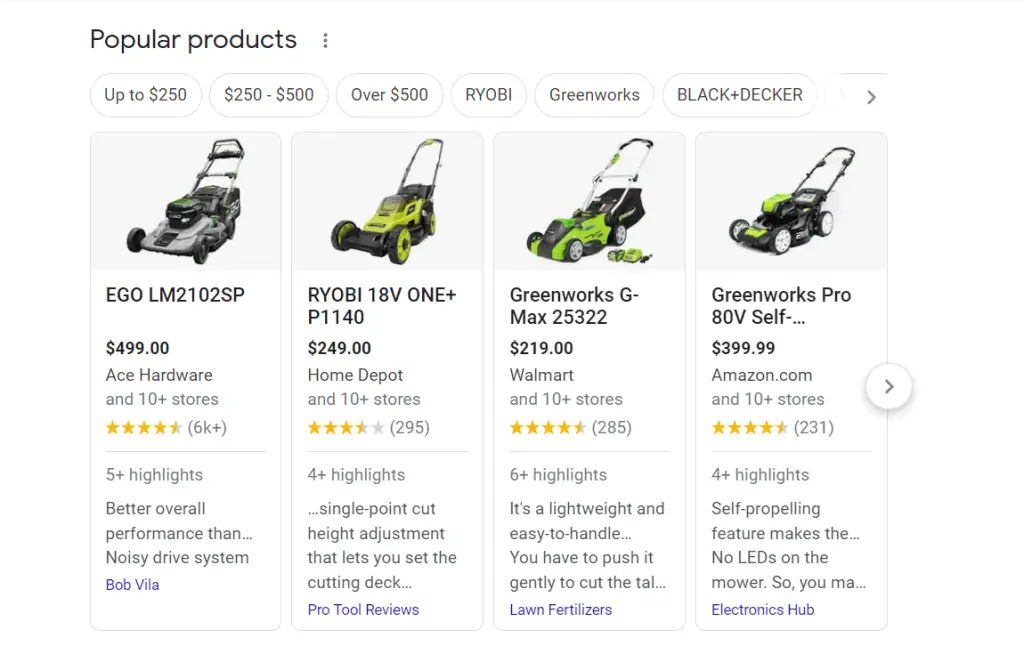
Popular Product Results
Popular product results are another example you’ll find in organic search. These results show relevant products to search queries with buyer intent, and include images, ratings, prices, availability, and description information.
Organic Search vs Paid Traffic
Organic search is different from paid search traffic because the results are from natural search rankings in the search engines based on on-page and off-page SEO signals. You cannot pay money to increase a website’s visibility in the organic results. Those rankings are determined algorithmically by search engines like Google, Yahoo, and Bing.
However, you can use paid search methods to have your website ranked above the organic search results. This marketing strategy is called pay-per-click (PPC) advertising where you pay a cost for each click on your site’s ads. See this related guide on the difference between SEO vs PPC for more details.

Organic Search Summary
I hope you enjoyed this guide about organic search.
As you discovered, organic search refers to the unpaid search results that are displayed on the SERPs in search engines like Google, Yahoo, and Bing. Organic search results are beneficial for SEO because they are free listings that exclude paid ads and appear in a variety of ways (as the examples showed) that are most relevant to the user’s search query.

SEO Chatter is dedicated to teaching the fundamentals of search engine marketing to help marketers understand how to increase organic website traffic and improve search engine rankings.
